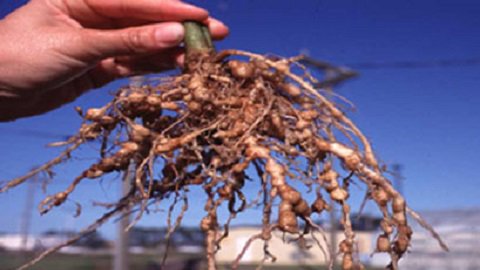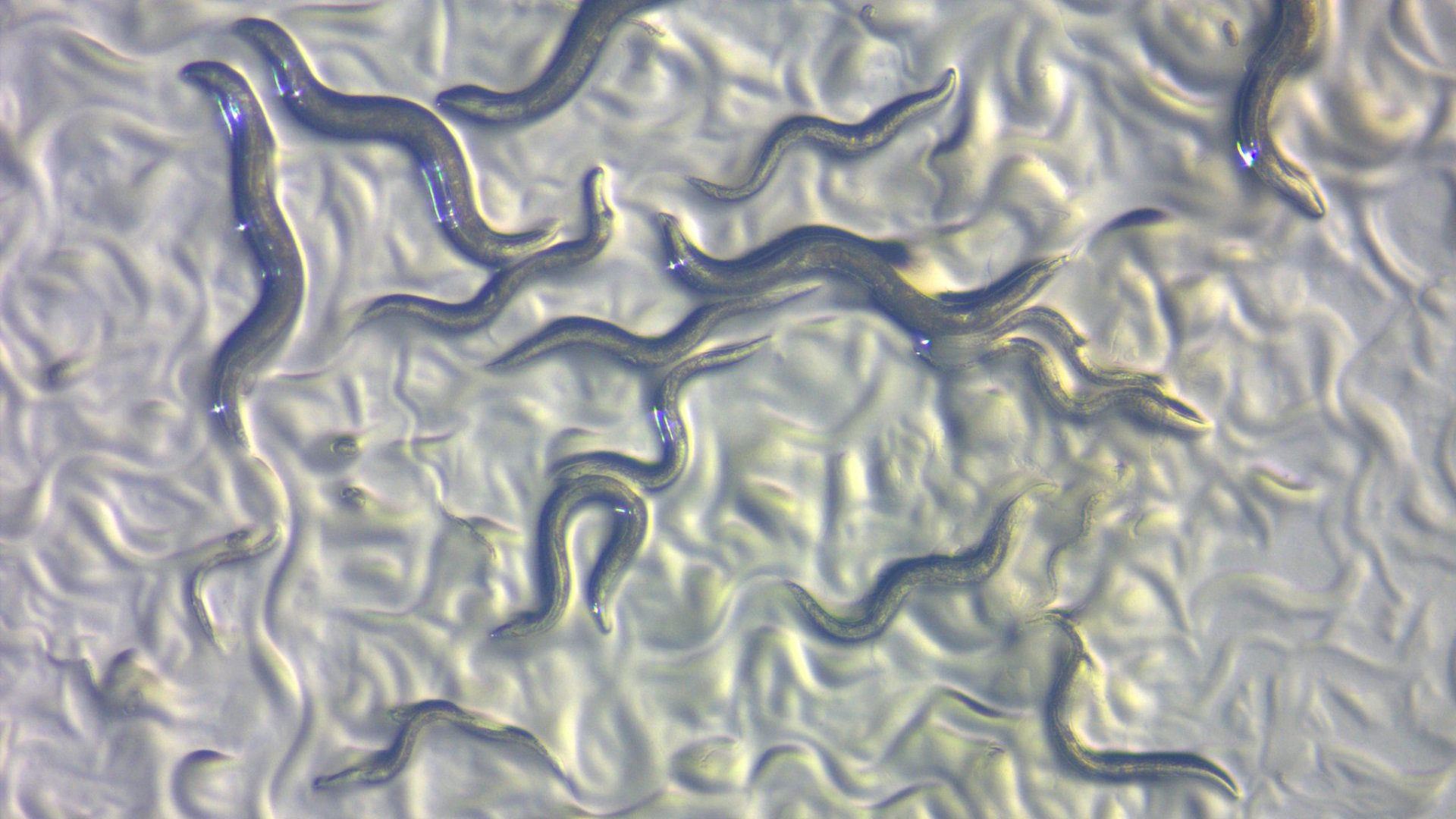A small, wriggling tube. A nematode is not more than that. However, nematodes as a very successful. It is said that if you were to count all animals on Earth, four out of five would be a nematode. They are everywhere: in soil, at the bottom of the ocean and living as parasites in plants, animals and humans.
A small, wriggling tube. A nematode is not more than that. However, nematodes as a very successful. It is said that if you were to count all animals on Earth, four out of five would be a nematode. They are everywhere: in soil, at the bottom of the ocean and living as parasites in plants, animals and humans.
A simple animal
Nematodes are also called roundworms. And that is exactly what these multicellular microbes look like. Nematodes lack a distinct circulatory system, as well as a respiratory system. The body of a nematode is so narrow that it can take up oxygen and excrete waste products through its skin. Scientists have identified thousands of nematode species, but think that there may actually be millions of different species. The most studied roundworm is Caenorhabditis elegans, that is used as a model organism in biology.
Globetrotter
Nematodes are found in almost every ecosystemon Earth. They inhabit the soil: a handful of dirt can easily contain millions of nematodes. But they also inhabit freshwater and oceans. They even live on rocks, in mines, at the bottom of the ocean and in ice sheets. Without doubt, you can call them real survival experts. In unfavourable conditions, many nematode species can go into a kind of endurance hibernation (cryptobiosis), just like water bears. This way they can survive harsh conditions like draught or absence of oxygen.
Most free living nematodes are microscopic in size. They feed themselves with micro-organisms like fungi, bacteria, algae or other nematodes, and organic debris. Nematodes are therefore an important link in many food chains. In agriculture, free living nematodes are indispensable for fertile soil. They break down organic matter and produce newly usable building blocks for plants, such as nutrients containing nitrogen, phosphorus and minerals.
Good, bad and ugly
Apart from free living nematodes, there are a number of species that live as parasites in another organism. In vertebrate animals and humans, these nematodes live mostly as gut parasites, for example the “large roundworm” (Ascaris lumbricoides). Nematodes that use animals as a host are often a lot bigger than free living nematodes. Some species, like Dioctophyme renale, can measure up to one meter in length.
Plants can suffer from nematodes too. These nematodes live in or on the plant root, and make the roots grow abnormally. Good for the nematodes, bad for the plant and the farmer: plant-parasitic nematodes can potentially destroy a whole harvest. However, other species of nematodes can be beneficial for plants, because they parasitize on insects that feed on crop plants. Nematodes of the genus Steinernema penetrate insect bodies and multiply inside the insect, which does not survive this. Steinernema is therefore used as a biological control agent for pest species of insects, and is also used against the oak processionary.

Nematodes affected the roots of this plant

